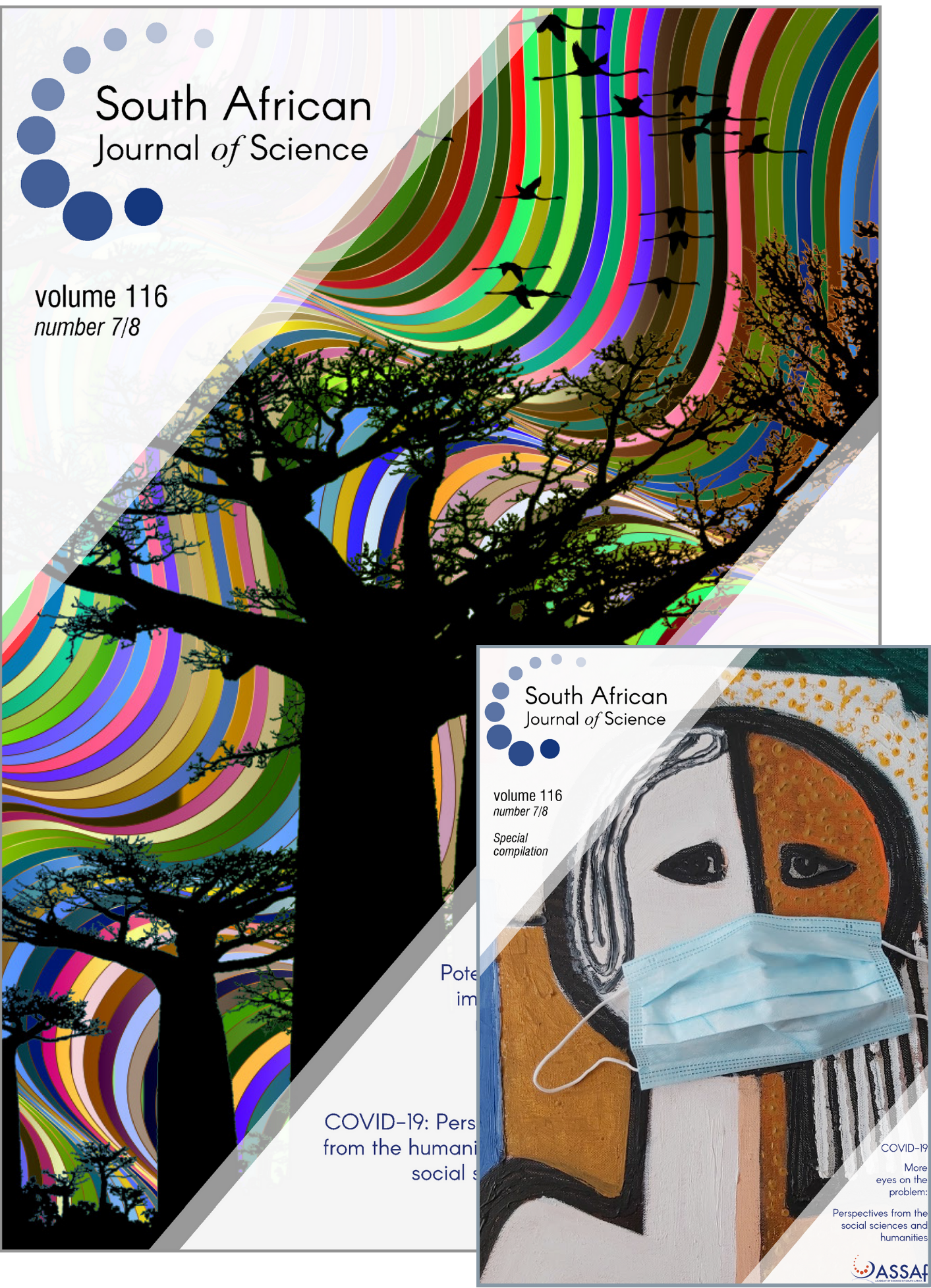Characterisation of wet and dry summer seasons and their spatial modes of variability over Zimbabwe
DOI:
https://doi.org/10.17159/sajs.2020/6517Keywords:
long-term rainfall, Inter-Tropical Convergence Zone, ITCZ, empirical orthogonal function analysisAbstract
In the face of a changing climate, knowledge on the characteristics of wet and dry summers and their modes of variability becomes of great importance to Zimbabwe so that proper policies and planning can be implemented to maximise the positive impacts of climate change while minimising its negative impacts. We used time series of rainfall anomaly index, empirical orthogonal function analysis and composite analysis to determine the temporal and spatial characteristics of summer rainfall in Zimbabwe between 1980 and 2013. Results indicate that there is a possible shortening in the length of the summer season, running from November to March. There were 14 anomalous summer seasons (7 dry and 7 wet) during the 33 summer seasons in the study period. Three dominant modes of variability were identified for Zimbabwean summer rainfall for the period under study: (1) an east–west gradient accounting for about 63% of the total variability, (2) a northeast–southwest oscillation accounting for about 18% of the variability and (3) a northwest–southeast oscillation accounting for about 6% of the variability. From the results, the high frequency of occurrence of above or below normal summer seasons is a major concern due to their far-reaching effects on Zimbabwe’s economic and social well-being. Circulation mechanisms influencing such characteristics should be studied and possible predictors identified for the development of short-term climate prediction models. If the forecasting of extreme events is reliable and done with sufficient lead time, the information can be utilised to mitigate the adverse effects while maximising their positive impacts. The findings of this study are important for informing economic activities in sectors such as farming, energy, mining, and tourism, which rely heavily on summer rainfall. However further studies must be carried out to identify the atmospheric and oceanic circulations which lead to such rainfall variability. Such information is critical in the development of reliable rainfall forecasts and early warning systems.
Significance:
- Rainfall affects a variety of socio-economic activities, especially in Zimbabwe where rain-fed agriculture is a major contributor to the gross domestic product. Therefore, understanding spatial and temporal variations in rainfall enhances the formulation of strategies and decision-making to ensure sustainable development in the country.
Published
Issue
Section
License

All articles are published under a Creative Commons Attribution 4.0 International Licence
Copyright is retained by the authors. Readers are welcome to reproduce, share and adapt the content without permission provided the source is attributed.
Disclaimer: The publisher and editors accept no responsibility for statements made by the authors
How to Cite
- Abstract 657
- PDF 580
- EPUB 207
- XML 353












.png)